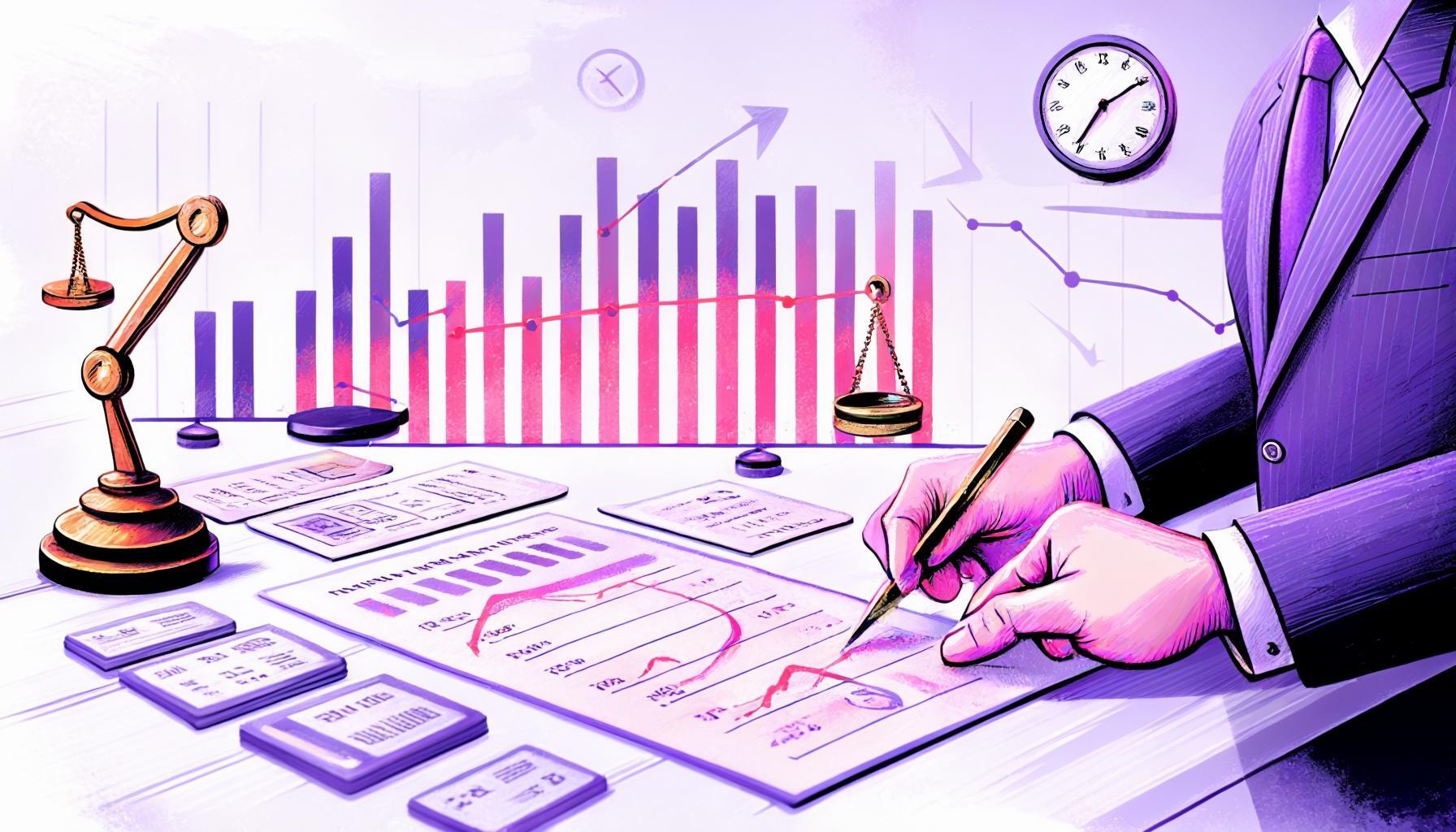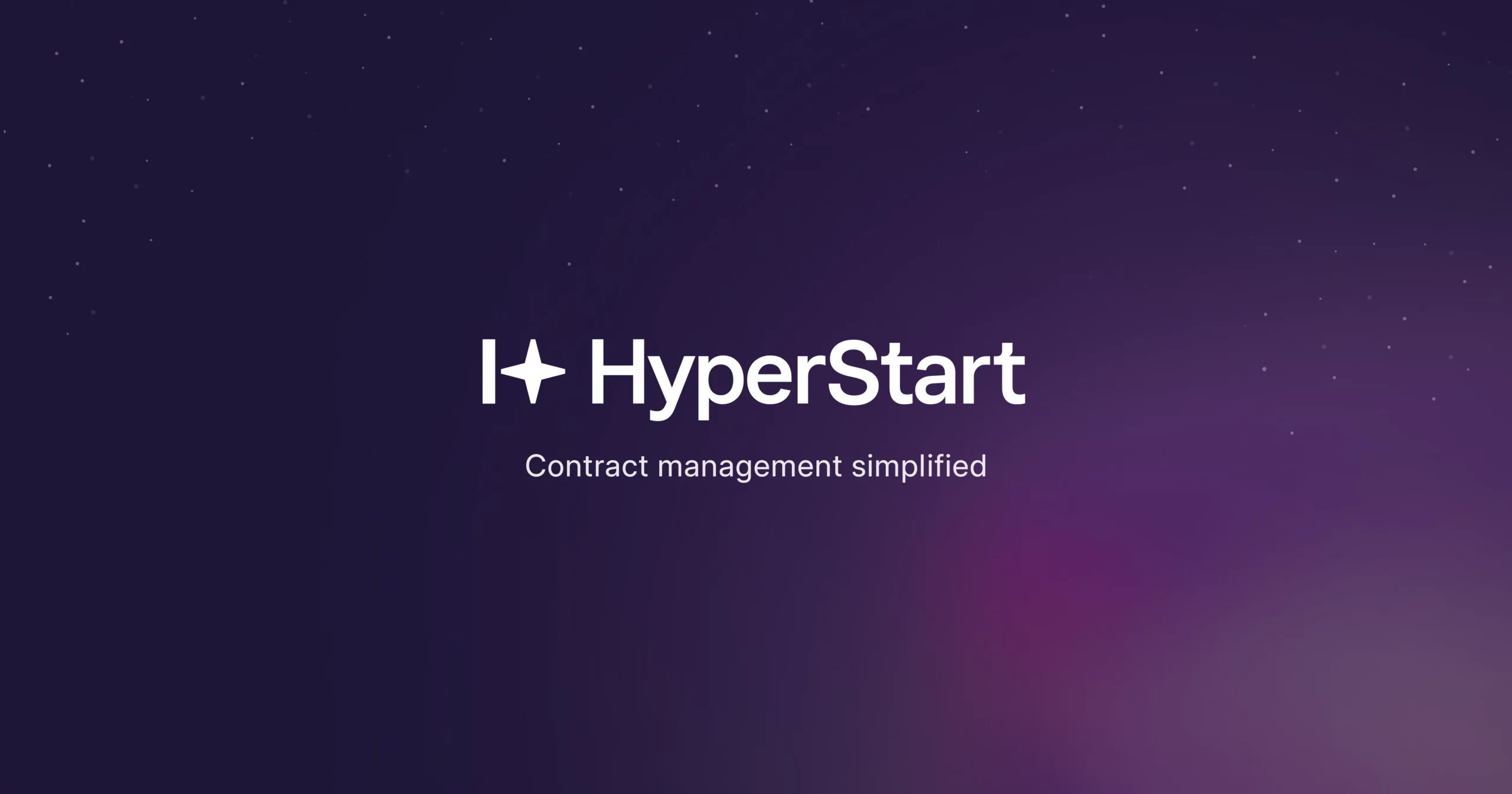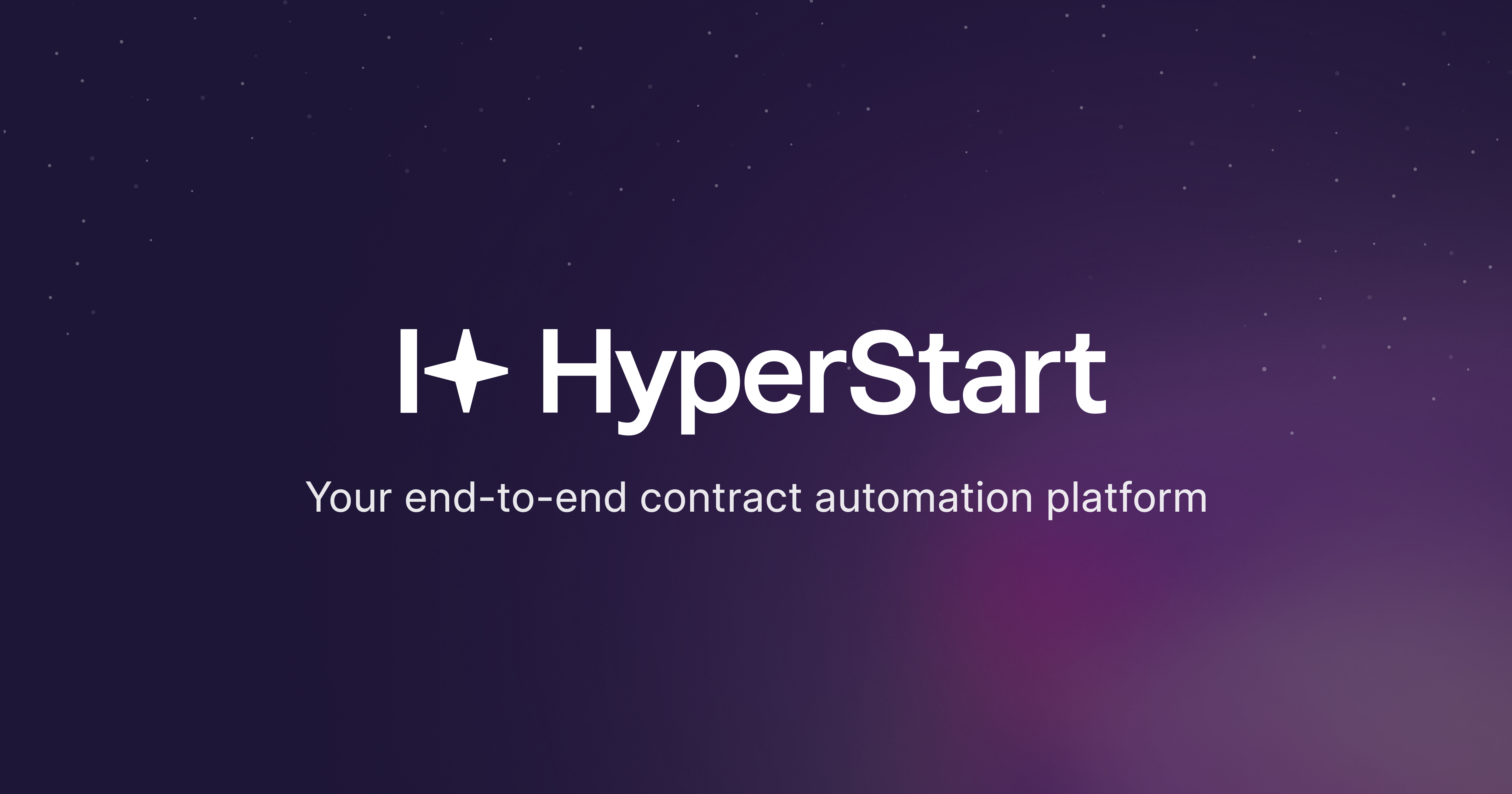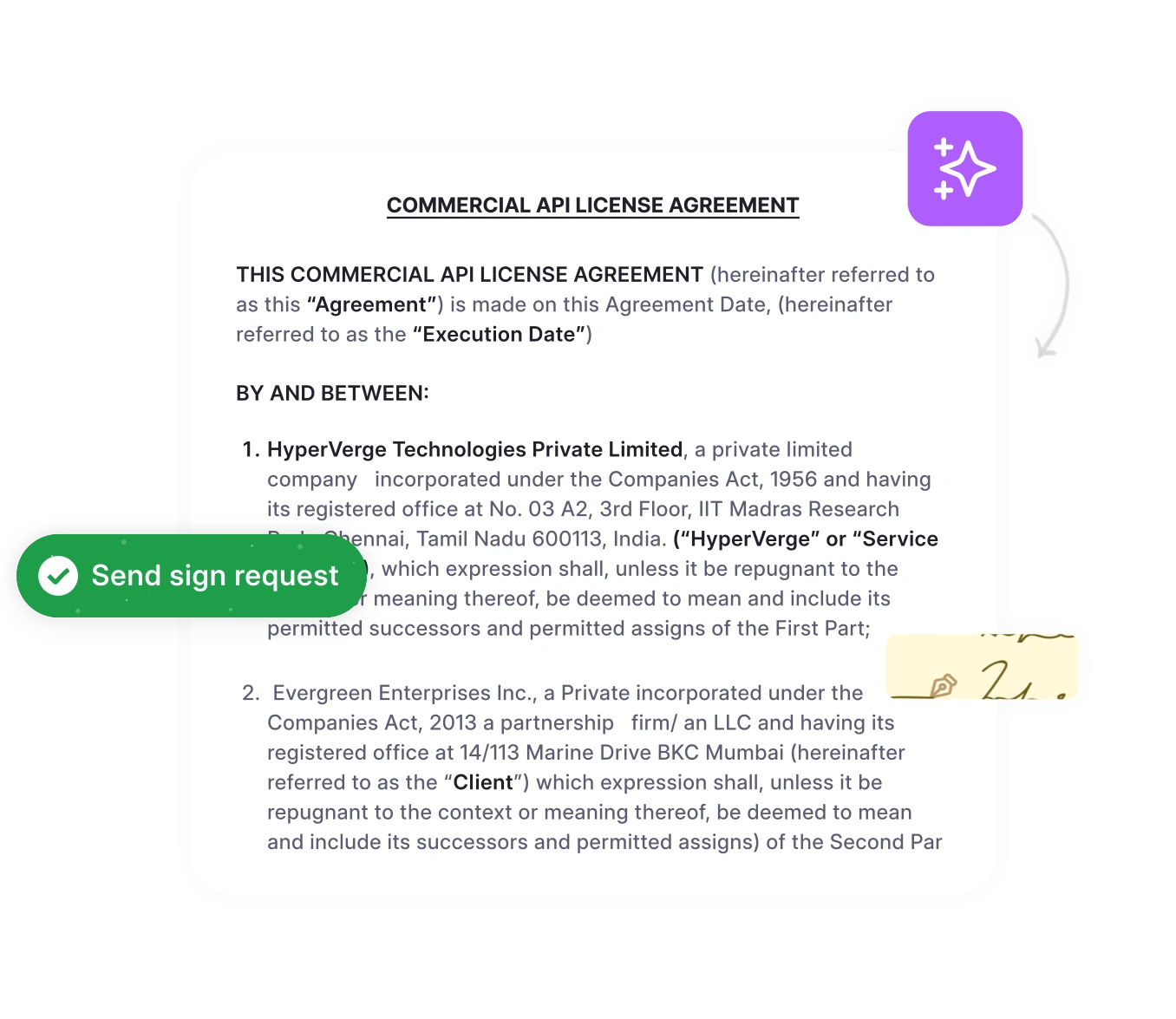You signed the contract and are excited to begin. But as you read the details, you see potential problems: unclear terms, tight deadlines, hidden costs, and confusing clauses. Suddenly, what seemed like a great deal started to look risky.
Whether you’re a seasoned entrepreneur or just starting, understanding how to identify, assess, and mitigate risks in your contracts can make or break your success. Contract risk management is not just about avoiding pitfalls; it’s about proactively addressing financial, regulatory, performance, and security risks to protect your business. Using contract risk management software can further enhance this process by automating risk detection, improving compliance tracking, and reducing manual errors.
Consider this real-world example: Rogers Communications and Bell Aliant, two industry giants, signed a contract, but a minor punctuation error—a misplaced comma—gave one party the right to terminate the agreement early. According to The New York Times, this “comma crisis” cost $2.3 million.
So, do your contracts protect you from such vulnerabilities, or are there hidden risks that could impact your bottom line?
In this blog, you learn about the types of contract risks, how CLM software helps manage them, ways to mitigate risk with a CLM solution, and 8 best practices.
What is contract risk management?
Contract risk management is identifying, assessing, and mitigating potential risks throughout the contract lifecycle. It involves contract risk analysis, tracking compliance, ensuring that all parties adhere to legal and regulatory requirements, and managing risks such as financial losses, legal exposure, and security risks.
By implementing effective contract risk management, you can:
Protect your business from unforeseen issues that could drain your finances, cause legal disputes, or result in lost opportunities.
Ensure compliance with industry regulations and contractual obligations, minimizing the risk of non-compliance penalties or lawsuits.
Collaborate across departments like legal, sales, and operations to mitigate risks holistically.
Evaluate risks across your entire contract portfolio, ensuring a comprehensive view of potential risks for your business.
Secure sensitive information by assessing and addressing any security risks, such as data breaches or confidentiality breaches.
The goal is to provide a safety net that protects your business, ensures both parties fulfill their obligations, and prevents future disputes or financial strain.
Types of contract risk
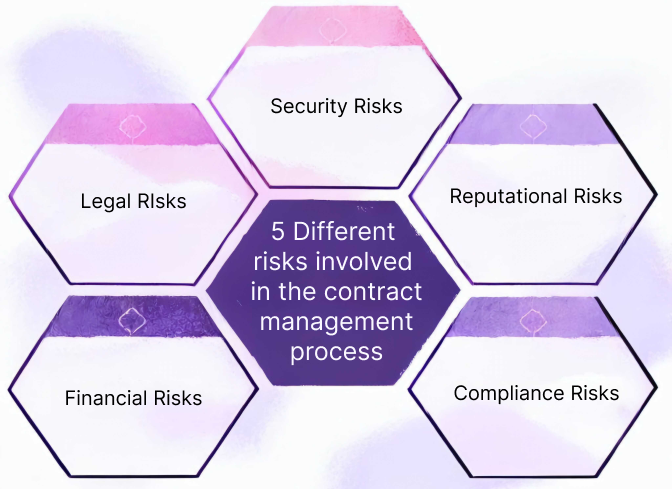
Here are the five major types of contract risks that you should anticipate and mitigate if any loopholes exist in your contracts:
1. Financial risks
Inefficient contract management can lead to delays in approvals, contract execution, or reaching project milestones, triggering late fees, missed discounts, or lost business opportunities. Additionally, automatic renewals need to properly evaluate costs or terms to prevent businesses from unfavorable agreements.
Key concerns:
Overpaying vendors or under-collecting from customers due to inaccurate invoices or payment processing.
Failing to negotiate during contract renewals, resulting in missed opportunities for better pricing or service levels.
2. Legal risks
Legal risks can stem from ambiguous contract wording, potentially leading to disputes about each party’s obligations, which can be costly to resolve through litigation. A lack of compliance with relevant laws or regulations exposes your business to fines and penalties.
Key concerns:
Non-compliance with laws such as GDPR or HIPAA, or failure to address regulatory changes, can result in fines.
The omission of essential clauses like termination rights, intellectual property, or confidentiality can leave your company vulnerable to legal challenges.
3. Security risks
Contracts often contain confidential information such as trade secrets, customer data, or financial details. If not properly secured, these can be hacked or leaked, resulting in financial and legal consequences. Contract management security risks such as data breaches and unauthorized access need to be carefully managed. Poor version control could also allow unauthorized access or edits, exposing the contract to tampering.
Key concerns:
Unauthorized access to contract information due to poor access controls or cybersecurity measures.
Data leaks which can lead to reputational damage and regulatory scrutiny.
4. Reputational risks
Failing to meet contractual obligations can severely harm your company’s reputation, leading to lost trust from clients, partners, or suppliers. Poor contract management, such as failing to track supplier performance, can lead to missed deadlines or unmet service levels, negatively impacting your brand.
Key concerns:
Delays in deliverables cause dissatisfaction among clients.
Public exposure of contract mishandling can tarnish your reputation.
5. Compliance risks
Regulatory non-compliance is one of the most significant risks in contract management. Failing to meet regulatory compliance risk requirements can result in financial penalties, lawsuits, or even the loss of your business license. Please address industry-specific regulations to avoid operational shutdowns.
Key concerns:
Compliance with data privacy laws, such as GDPR, is essential for mitigating data exposure risks.
Regular audits of contract clauses to ensure they meet evolving regulatory requirements.
Avoid regulatory challenges and costly penalties with HyperStart CLM
HyperStart CLM helps to store and manage standard contract clauses that ensure adherence to relevant regulations.
Why is contract risk management important?
Here’s how a contract lifecycle management solution helps eliminate potential risks across various categories, directly contributing to better contractual risk management:
1. Reduce the risk of losing contracts
Centralized contract storage helps a lot with keeping your contracts safe and ensuring contract risk compliance. When everything’s in one easy-access place, you can find what you need quickly and monitor any potential risks. Plus, it makes sure everyone sticks to the agreed terms.
Using centralized storage with version control lets you see who made changes and when so you can catch any edits that weren’t supposed to happen and ensure everyone’s on the same page.
Having a central repository also means you use the same contract templates and clauses every time, which reduces mistakes or mix-ups that could cause legal or financial risks.
Having all your contract activity in one spot makes it easy for compliance audits, and you’ll have proof if any disputes arise.
2. Avoid legal disputes and penalties
Minimizing legal exposure is crucial, and CLM software plays a key role by mitigating security issues and ensuring compliance with laws and regulations. This helps you avoid disputes and fines.
HyperStart CLM software uses standardized templates that legal experts vet for compliance. This ensures every contract meets legal standards, reducing the risk of errors that could lead to legal issues.
CLM software provides a solid foundation by keeping all contracts consistent and integrating compliance requirements into workflows. It not only defends against legal risks but actively prevents them.
3. Reduce compliance issues or disputes
Automated workflows remove the risk of mistakes by handling repetitive tasks like approvals and deadline reminders. This ensures every contract follows internal compliance protocols, reducing non-compliance risks.
By automating key steps like routing contracts for stakeholder review, HyperStart CLM helps you stay on top of compliance requirements. This enables you to gain control of who needs to sign and who has the pen for faster contract cycles.
Granular access controls and timely reminders help everyone be on the same page and quickly identify and address potential issues.
4. Receive early warnings for contract breaches
Contract monitoring and alerts closely monitor key contract terms—like milestones and deadlines. Trigger notifications 30, 60, or 90 days before deadlines. This early warning is crucial because it opens opportunities for cross-sells and up-sells.
By catching problems early, you prevent them from becoming bigger issues. This prevents disputes and revenue leaks while maintaining good relationships.
When you catch something early, you can handle it strategically. You can talk with the people involved, make changes, or even renegotiate terms if needed. This proactive approach keeps everything running smoothly and saves you time and money in the long term.
5. Reduces the risk of unauthorized modifications or errors
Audit trails document every action taken on a contract, showing who did what, when, and what changed. This clarity eliminates confusion and assigns responsibility. For instance, version control ensures that only the latest contract version is used, avoiding mix-ups with outdated documents and faulty clauses.
Contract intelligence makes these processes even more efficient by automating the tracking and analysis of changes, further reducing the risk of unauthorized modifications. These detailed records are invaluable in reducing disputes, as they provide a clear, verifiable history of agreed-upon terms, making it easier to resolve disagreements.
Transparency builds trust among everyone involved in the contract. Additionally, easy access to contract documents makes audits efficient and ensures compliance with regulations. This streamlined approach enhances clarity and strengthens overall contract management processes by minimizing contract risks.
How to mitigate risk using a CLM solution [step-by-step process]
Here is a five-step contract risk management process to implement an effective contract risk management strategy using a CLM solution
Step 1: Identify contract risks
The initial phase of contract risk management involves a thorough contract review.
Understand the contract. What type of contract is it (purchase, service, NDA)? Who are you doing business with? Check their reputation, past work, and finances.
Look at the project details – What needs to be done (scope of work)? What are the deadlines and what will be delivered? How will success be measured?
Examine the financial terms – When and how will you get paid? Are there any penalties for late payments or mistakes? Could there be unexpected costs?
By answering these questions, you can identify potential issues and take steps to avoid them.
Step 2: Analyze contract risks
Once you’ve identified all the potential problems, it’s time to analyze them and determine the biggest threats.
Here’s the key. We need to assess the likelihood of each contract risk (high, medium, or low chance) and how it could hurt your business if it does occur (high, medium, or low impact). This helps us prioritize which risks deserve the most attention.
Think of it as a two-axis chart with likelihood on one side and impact on the other. Depending on where a specific risk falls on the chart, each box represents a level of risk (low, medium, high).
By doing this analysis, we can focus our resources on tackling the most critical threats first, ensuring we’re prepared for the issues that could derail your project.
Step 3: Develop contract risk mitigation strategies
We must develop mitigation strategies now that we’ve identified the high-priority risks.
Draft specific clauses in the contract that directly address the identified risk. For instance, a “force majeure” clause can shield us from unforeseen events like natural disasters that could disrupt the project.
Having a backup plan is crucial. This could involve identifying alternative suppliers or developing contingency plans in case of potential disruptions.
Open and timely communication is key. Establishing clear protocols ensures everyone involved is on the same page, allowing for concerns to be addressed promptly and avoiding misunderstandings.
In some cases, transferring some of the financial risk to an insurance company might be a wise move. This could involve purchasing insurance specific to the identified risk.
By implementing these mitigation strategies, we can reduce the potential damage caused by these threats, ensuring a smoother and more successful project.
Step 4: Negotiate and finalize the contract
With our mitigation plan, it’s time to translate those strategies into action by negotiating and finalizing the contract.
First, we must incorporate the risk mitigation strategies we developed into the contract, ensuring that contract risk and compliance considerations are addressed. Clear and concise language is crucial to avoid any misunderstandings later.
During negotiation, prioritize the most critical risk mitigation measures for your business. If anything in the contract seems unclear, don’t hesitate to seek clarification from the other party before finalizing the agreement.
Once the contract is drafted and incorporates your risk mitigation strategies, route it for internal review and approval by all relevant stakeholders using software like HyperStart CLM. Depending on the complexity of the contract, this includes legal, finance, and operational teams.
Step 5: Monitor and manage contract performance
Signing the contract isn’t the finish line; it’s the start of a business relationship. We need to keep a close eye on its performance and mutual commitment. This means tracking progress against agreed-upon milestones and deadlines to ensure everything stays on schedule.
Being alert for potential problems or deviations from the contract terms is also crucial. Early detection is key to avoiding bigger issues later. Contract intelligence can help spot hidden risks before they turn into major problems, providing valuable insights throughout the lifecycle.
Maintaining open communication with the other party is essential. Regular check-ins allow you to promptly address any concerns and ensure a smooth and successful collaboration throughout the contract lifecycle.
By following this comprehensive risk management process, businesses can effectively mitigate contract risks and ensure compliance throughout the contract lifecycle, leading to smoother operations and stronger relationships with partners.
Spot hidden risks before they turn into million-dollar mistakes
HyperStart CLM is your contract X-ray vision, seeing through legalese to reveal hidden risks.
8 Best practices of contract risk management
Here are the 8 best practices to manage risk in contracts.
1. Thorough contract drafting and review
Ensure contracts are clear and use plain language. Define key terms to avoid misinterpretations. Set a clear contracting process for handling contract changes.
2. Regular contract risk assessment
Periodically review contract milestones to spot risks like delays or performance failures. Assess the reliability of parties and legal/regulatory impacts.
3. Track contract dates and tasks
Maintain a timeline for deadlines, deliverables, payments, and renewal dates. Use automated alerts via contract management software to stay on top of key deadlines and renewal dates and ensure nothing is missed.
4. Conduct contract compliance and legal review
Update pre-approved contract clauses and ensure regular compliance reviews. Use AI-driven contract management tools to identify non-standard clauses, assess compliance, and streamline approvals.
5. Document and record contract changes
Securely store all contract documents with automatic version tracking. Restrict access based on roles and keep an audit trail of all modifications and approvals.
6. Facilitate contract communication and training
Use contract management software for seamless communication. Provide easily accessible training materials like video tutorials, FAQs, and guides.
7. Monitor and resolve contract disputes
Set up automated tracking and notifications for contract dispute resolution. Ensure stakeholders are informed, and issues are addressed promptly.
8. Maintain proactive contract monitoring
Track contract performance regularly to ensure compliance with terms. Use contract intelligence solutions to continuously monitor and analyze contract performance, early detecting potential issues to prevent more significant problems later.
By following contract risk mitigation strategies, you can significantly improve your contract risk mitigation efforts and safeguard your business from unforeseen challenges throughout the contract lifecycle.
HyperStart CLM: The all-in-one solution for mitigating contract risk
HyperStart CLM is one of the best contract risk management tools that simplifies legal workflows through automation and artificial intelligence technology, streamlining the contract lifecycle from creation to completion.
The platform serves as an effective risk mitigation solution for contracts, helping organizations mitigate contract risks and ensure compliance by:
Storing all documents in one secure location to avoid outdated or incorrect information.
Identifying risks during the contract creation process and negotiation, allowing teams to address them early.
Generating reports to analyze contract performance and pinpoint vulnerabilities.
Maintaining a clear audit trail of contract changes for dispute resolution.
Looking to streamline contract risk management? HyperStart CLM is your solution. Schedule a demo today.



